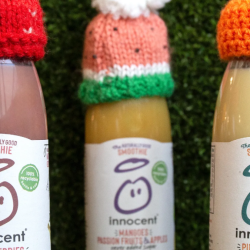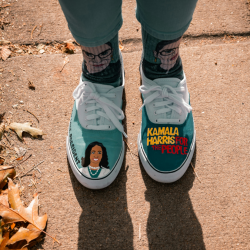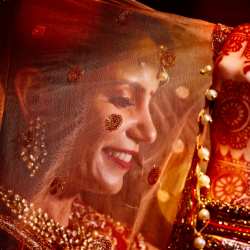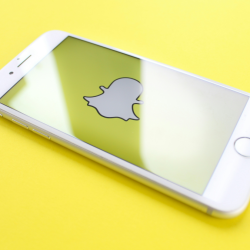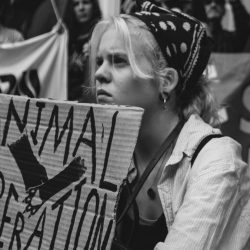Like brands and marketers everywhere, parties, too, need to remember to see constituents as they are, not as they prefer
When we think about political marketing, the country that first comes to mind is the United States, where the glamour and glitz of politics reach their pinnacle. This is where Goliath-slaying politicians like Alexandria Ocasio-Cortez set records while livestreaming on Twitch, where pop stars visit the White House to offer their perspective on current affairs, where Anna Wintour hosts buzzy Democratic fundraisers and fans wait for their favourite entertainers to declare endorsements during presidential races.
But India — the world’s largest democracy, which successfully concluded its contentious and awe-inspiring national elections on 1 June — has also become a battleground for political marketing, albeit of a grittier and less glamorous kind. 970 million Indian citizens were eligible to vote in 2024. 662 million of these eligible voters were digitally connected, 210 million of them were youth and a sizeable chunk were first-time voters. The numbers are staggering and difficult to fully grasp.
What is clear, though, is that parties felt that they could only compete effectively in this chaotic multiparty democracy by inventing, reinventing and experimenting with ways to impact influential voting blocs — with the added complication of ‘influential’ being defined differently depending on a party’s size, ambitions and traditional voter base (itself determined by intricate combinations of ethnicity, language, religion and caste). What forms did their marketing take?
Digitising with a vengeance: from videos to reels
YouTube, a go-to-source for accessing local language news and commentary for almost 80% of India’s netizens, was fundamental to every party’s media plans and outreach. Data from Google shows that combined cross-party spends in the 3.5 months of 2024 during which political advertising was permitted were 100 times the amount spent in 2019, when the last elections were held. Unsurprisingly, the incumbents i.e. the BJP, dominated spending, running almost 77,000 (largely video) ads during that time.
This was perhaps the first time that parties partnered with influencers strategically, instead of taking a more ad hoc approach, all in pursuit of the elusive ‘youth vote’. Cabinet ministers and even the Prime Minister, Mr. Narendra Modi, sat down with a handpicked list of content creators for interviews and ‘dialogues’. Candidates worked with large, micro and nano influencers with a more local focus and following to drum up support. These partnerships prompted their own backlash, with followers, independent observers and even other creators concerned about influencers’ patchy disclosure when it came to creating political content.
Meme-ified political positions
Memes, inevitably, flew back and forth, and it’s impossible to determine which ones were user-generated and which ones were birthed in X and Instagram ‘war rooms’. India’s WhatsApp cottage industry worked overtime, with political conversations being seeded organically and inorganically and rumour mongering taking on a life of its own.
Candidates and parties inundated people with customised messages. Family and friend groups splintered as campaigning picked up in intensity, many irredeemably so. What’s most interesting is the meme-ification of the language of politics. The Indian National Congress ran a series of bite-sized ads that deployed the tonality of memes — humour, inside jokes, cliches — to take potshots at the government’s track record and key leaders.
What’s less important than views is the fact that these videos are tailored to be either indignantly or happily forwarded.
Old school outreach held its own
Old school outreach — flyers, posters, print, radio and television ads, even unsolicited phone calls — also played their part and were arguably most influential. There was no substituting the time-honoured political rally, with P.M. Modi drawing on his much-vaunted charisma and oratory to stage 200+ events across India.
Rahul Gandhi invigorated the Indian political tradition of the ‘yatra’ or ‘pilgrimage’ — twice making his way across the country on foot, with the stated intention of meeting ordinary Indians, listening to their concerns and reminding them of what they had in common. The rallies and the yatras were of course immediately packaged into stirring content, and depending on where your allegiances lie, it was difficult to remain unmoved by what you saw. The rousing brand anthem still has its uses.
Manifestos of another kind — political statements of intent that outlined each major party’s worldview and policy goals — ignited a firestorm of debate. They dominated dinnertime and television discussions as soon as they were published, furnishing both loyalists and opponents with ammunition and tipping undecided voters over the edge.
Fractured mandate in a fractured landscape
Political consultancies were brought into the fray, as were advertising agencies, social media marketers and pollsters, with the latter predicting a sweep for the BJP in particular, and its alliance more generally.
As it turns out, all of this informed guesswork and decision-making proved to be inaccurate and even directionally flawed. The BJP did not win a simple majority on its own, the opposition did much better than expected, and what emerged was a fractured mandate which offers both the incumbents and the opposition an equal chance to outdo expectations. Analysts and experts are still unpacking why the results played out as they did, trying to compensate for a lack of foresight with hindsight.
But what does this mean for political marketing?
Depending on which side you’re on, campaigns either did much better than expected, or were much less effective than you had hoped. But from a brand-building perspective alone, there are some interesting points to be noted.
- Ubiquity can be a double-edged sword in everyday life
There’s no brand building without recognition. But becoming ubiquitous and synonymous with a category, or in this case, with a party, has its downsides. P.M. Modi has long been India’s most recognisable and highly publicised leader, tightly associated with everything from vaccination rollouts, cooking gas subsidies and of course, big-picture decisions. But in an incredibly diverse and complex country, there are limits to how wide and deep a personality-based brand can stretch, particularly one that must be relevant in the thick of everyday challenges, ups and downs. - There’s no meaningful media spend without meaningful measurement
Spends in and of themselves mean nothing without credible, verifiable data and measurement. Pollsters, consultancies, marketing agencies and ‘image management’ services often use confidentiality agreements as cover to claim credit for electoral successes without any specifics. Influencers and content creators do not consistently disclose political partnerships. In the absence of government policies that insist on transparency, conversations about political marketing in India will always remain hypothetical. - Aspirations matter, but so do anxieties
The consensus seems to be that the Indian electorate ultimately delivered a decisive verdict in favour of issues, not just ideologies, and local, even hyperlocal concerns. Is your brand one that spins dreams, or is it one that understands and responds to problems? Each of these kinds of brands has to pick its moment — political brands in particular. There’s a time for grand gestures, and a time for solutions, and even better — a balance to be struck between both.
Ultimately, what’s most important to remember is that media, marketing and ‘messaging’ have their limits when they’re based on our imaginings about consumers, rather than a clear-eyed assessment of what they’re actually thinking and feeling — whether we like it or not, agree with it or not. Data and projections should not be tailored to preferences, and it’s worth assessing whether they’re telling only you what you already know and are predisposed to believe.
It’s a lesson that politicians and marketers, parties and brands seem to need to learn, over and over again.
Featured image: Naveed Ahmed / Unsplash


























